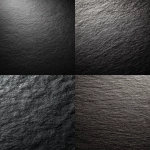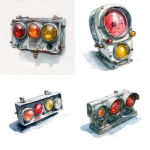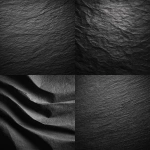Explore the Best AI Image Gallery

Beyond the Canvas: Wearable Tech as a Creative Catalyst
The intersection of technology and creativity has always been a fertile ground for innovation. In recent years, wearable technology has emerged as a powerful force, reshaping the creative landscape and empowering artists, designers, and innovators to explore uncharted territories.
From interactive installations to immersive performances, wearable tech is blurring the lines between the physical and digital worlds, creating new avenues for artistic expression and audience engagement.
Wearable Tech: A New Creative Frontier
The versatility of wearable technology opens up a plethora of possibilities for creatives across diverse disciplines:
- Visual Arts: Wearable sensors can translate movement, biofeedback, or even emotions into visual art. Imagine garments that change color based on the wearers heart rate or sculptures that react to the audiences presence.
- Music and Sound Design: Wearables equipped with microphones and haptic feedback can transform sound into a physical experience. Musicians can create interactive performances where instruments respond to the listeners movements, or audiences can feel the rhythm of the music through vibrations.
- Dance and Performance Art: Dancers can utilize wearables to enhance their choreography by incorporating light displays, motion tracking, or synchronized sound effects. This can lead to mesmerizing performances that blend technology with the human body in a captivating way.
- Fashion and Design: Wearables are pushing the boundaries of fashion, going beyond aesthetics to incorporate functionality and interactivity. Imagine clothing that adjusts its temperature based on the environment or displays personalized messages.
Ethical Considerations: Navigating New Territory
As with any emerging technology, wearable tech in the creative sphere raises important ethical considerations:
- Data Privacy and Security: Wearables collect vast amounts of personal data. Its crucial to ensure responsible data handling practices, obtain informed consent, and protect user privacy.
- Accessibility and Inclusion: Creative applications of wearable tech should be accessible to all individuals, regardless of their abilities or socioeconomic background. Designers must consider the needs of diverse users and strive for inclusivity.
- Authenticity and Ownership**: The use of AI and algorithms in creative processes raises questions about authorship and originality. Its important to establish clear guidelines and ethical frameworks for attributing ownership and credit in collaborative works involving technology.
Future Trends: The Evolution of Creativity
The future of wearable tech in the creative industry is brimming with possibilities:
- Augmented Reality (AR) and Virtual Reality (VR) Integration: Wearables will seamlessly blend physical and digital worlds, creating immersive experiences that blur the lines between reality and fantasy.
- Brain-Computer Interfaces (BCIs): BCIs could enable direct control of creative applications through thought alone, unlocking new levels of intuitive expression.
- Personalization and Customization**: Wearables will allow for highly personalized creative experiences, tailoring content and interactions to individual preferences.
As wearable technology continues to evolve, it will undoubtedly continue to revolutionize the creative industry, fostering new forms of artistic expression, empowering creators, and enriching our cultural landscape.

](https://images.ai-img.art/thumbnails/150/3e8c063b4357fc743a3c6e49a3145ee31b2dcecc018c38d2db8f97bf3e3fda3f.webp)








](https://images.ai-img.art/thumbnails/150/8c320ce9aefbbb5b9ec5fd4e1d0fba7388f0fff5b6c2e2f14077cad3008f291d.webp)


](https://images.ai-img.art/thumbnails/150/1accb5453f2335686b162f0a879c7ce73a18516a33868f214a16bdaf95beeb5a.webp)

](https://images.ai-img.art/thumbnails/150/3c5dc62bba83cc9919c20ebfec8430d31e821cef586a2753dd85ef26d77d480a.webp)

](https://images.ai-img.art/thumbnails/150/1d7b3a908141474d50d90721c394db29c0cb5404d685ae70ea60430c18e905b7.webp)





